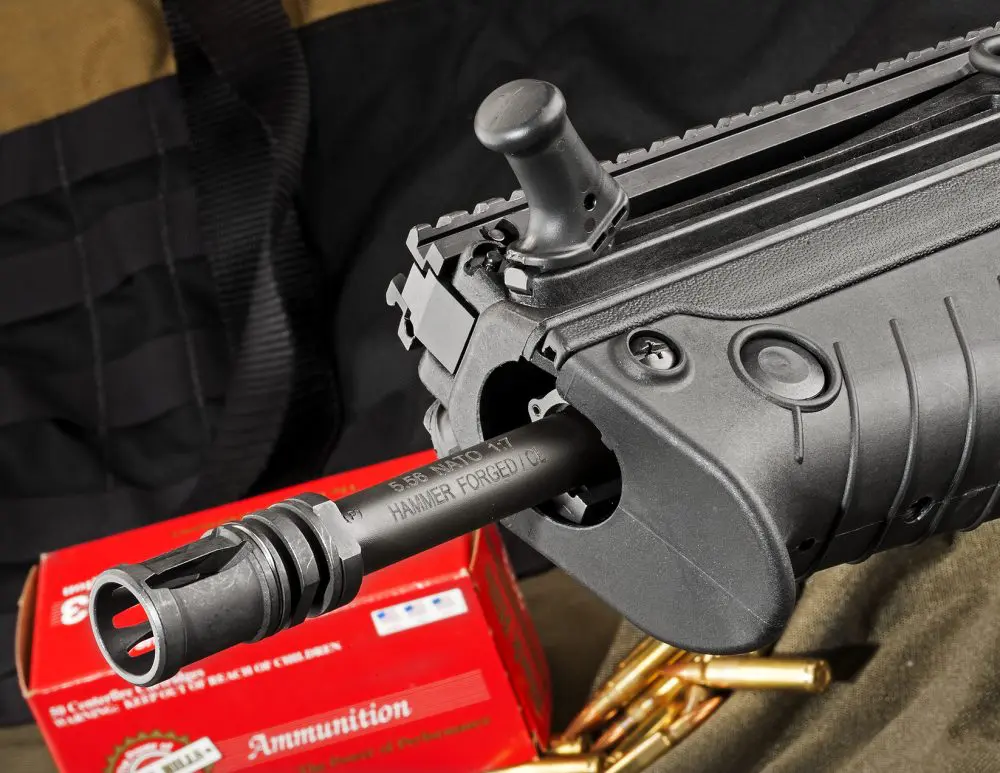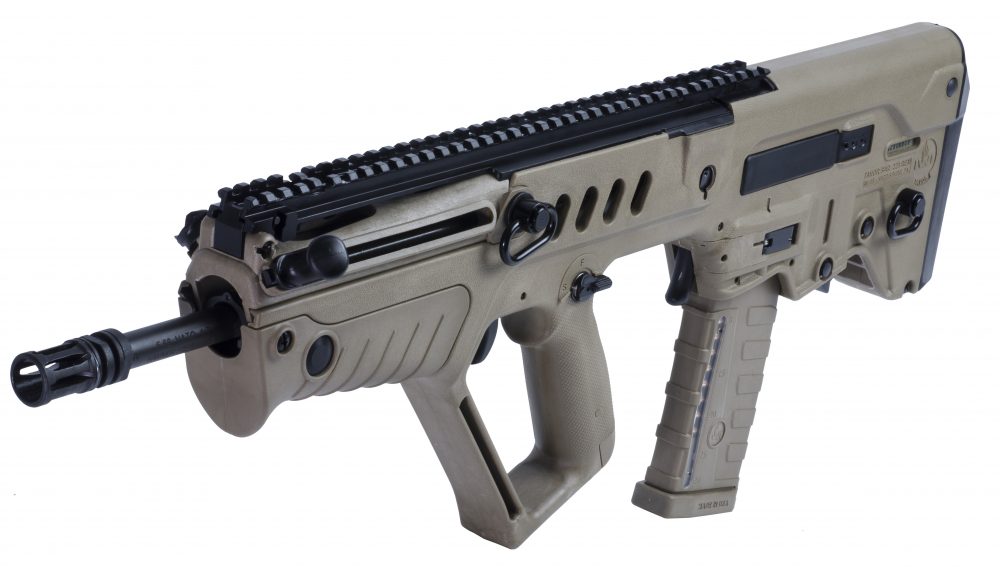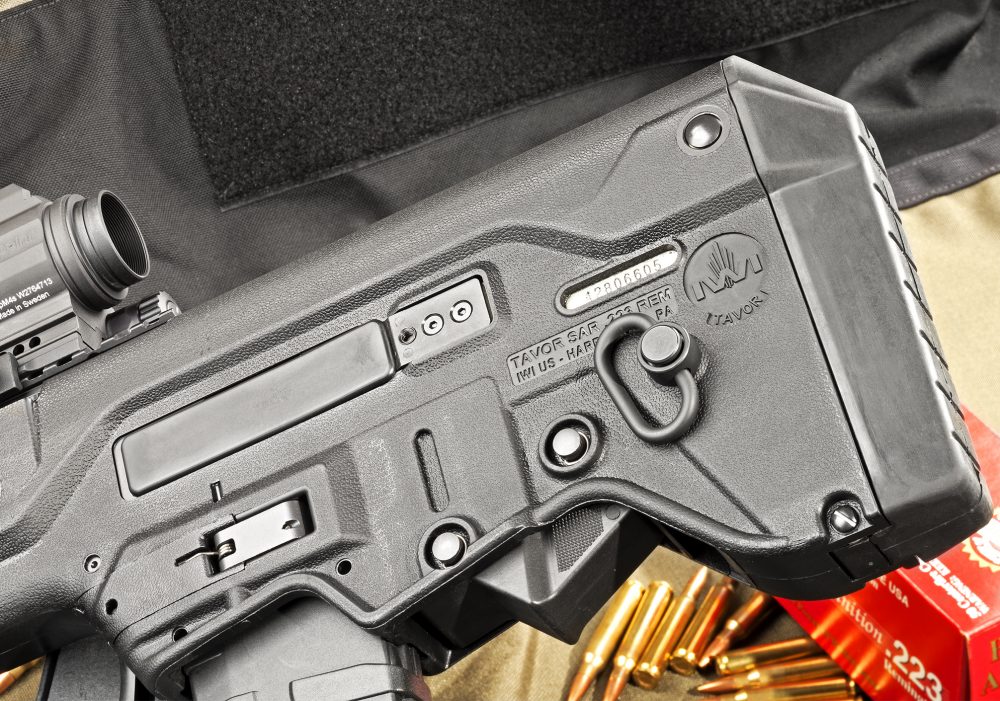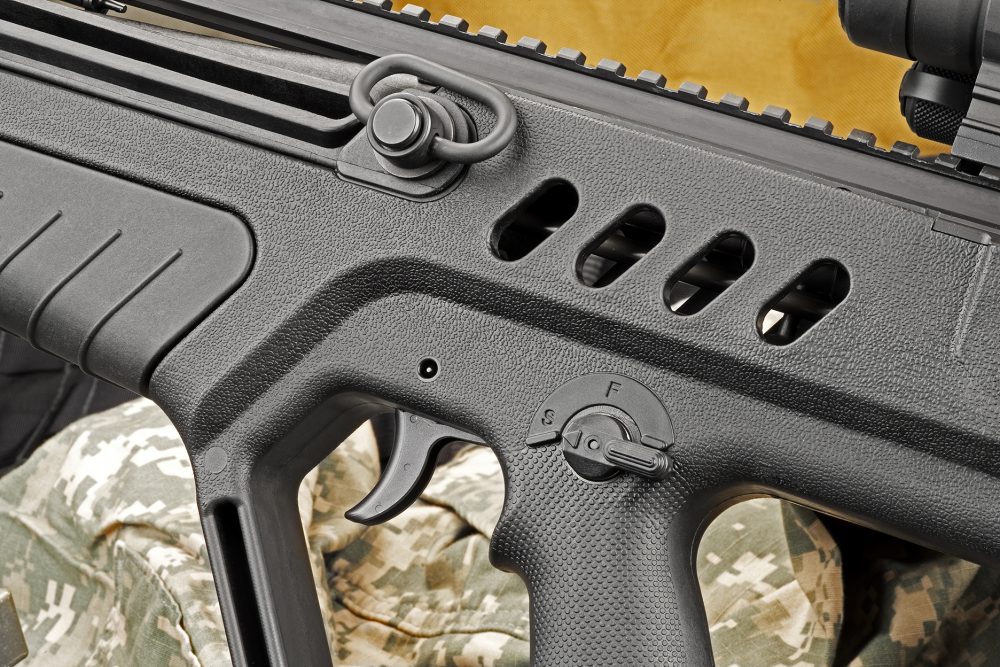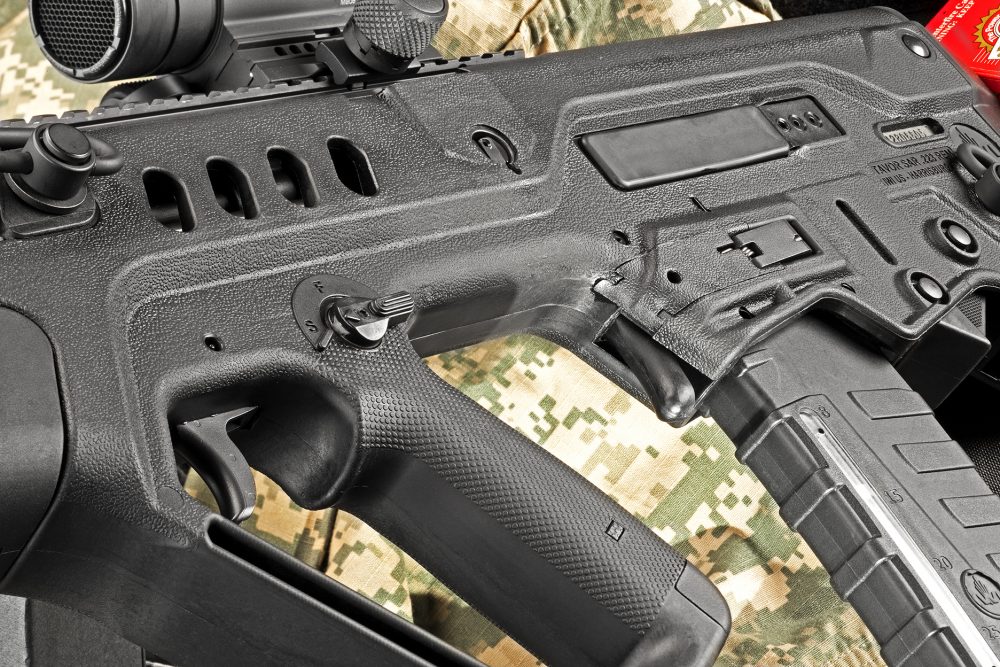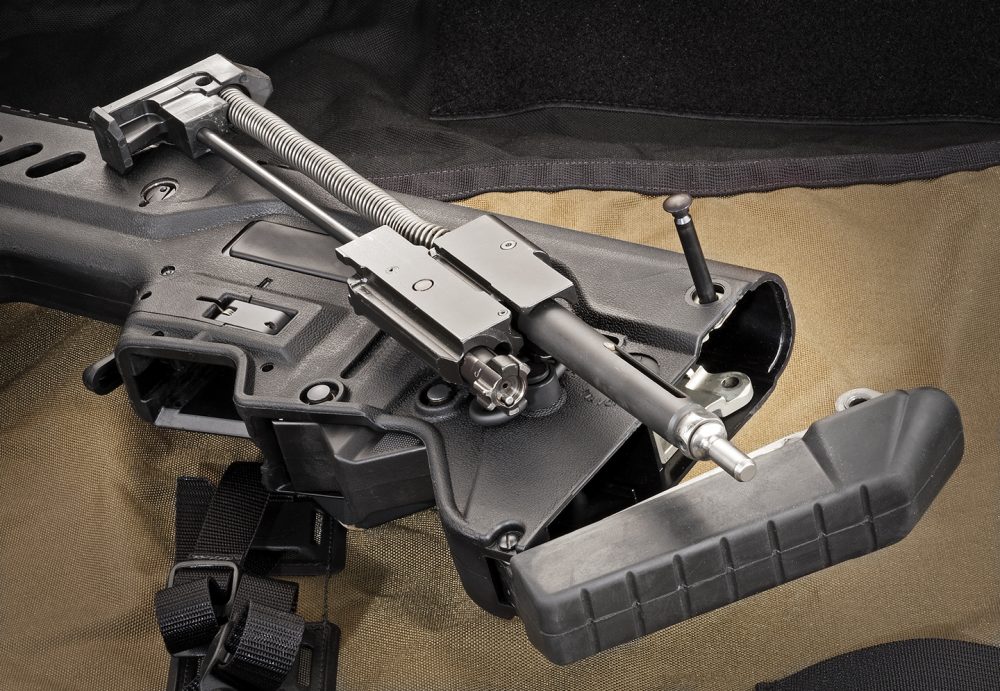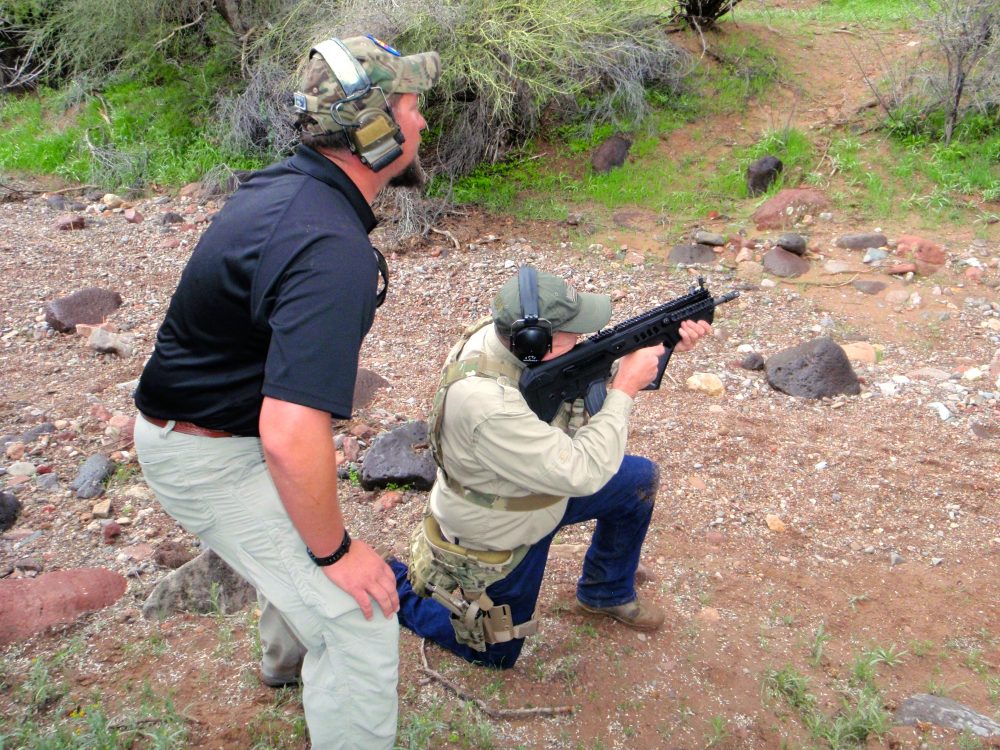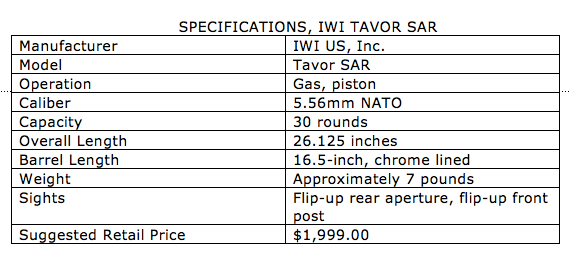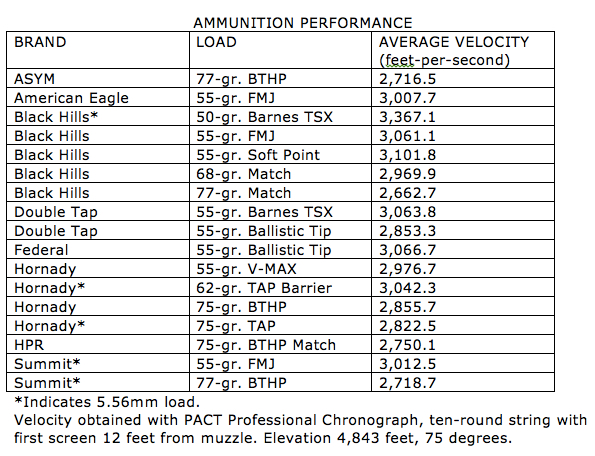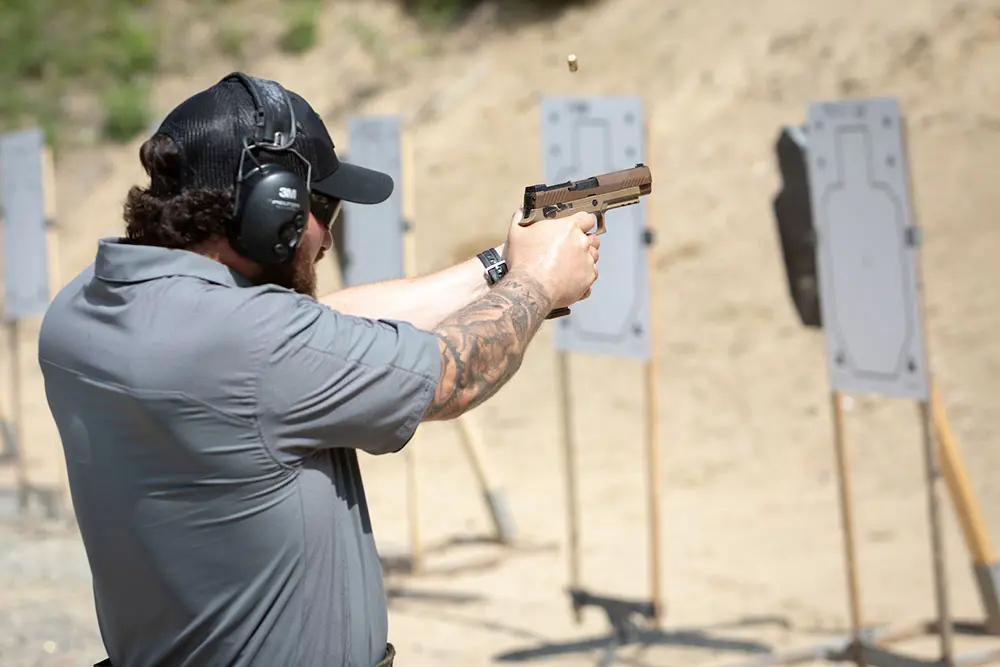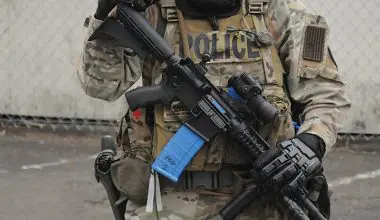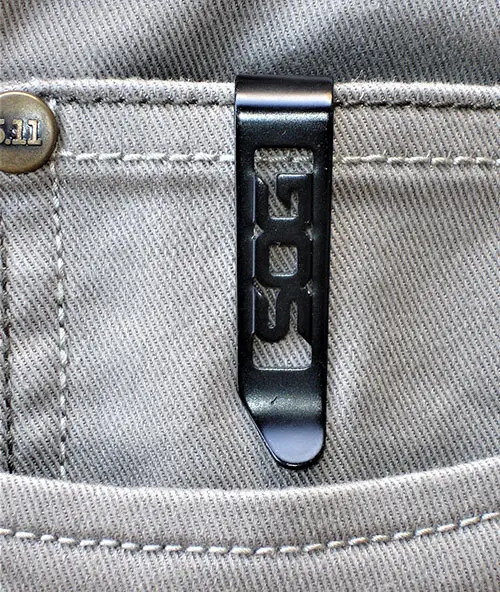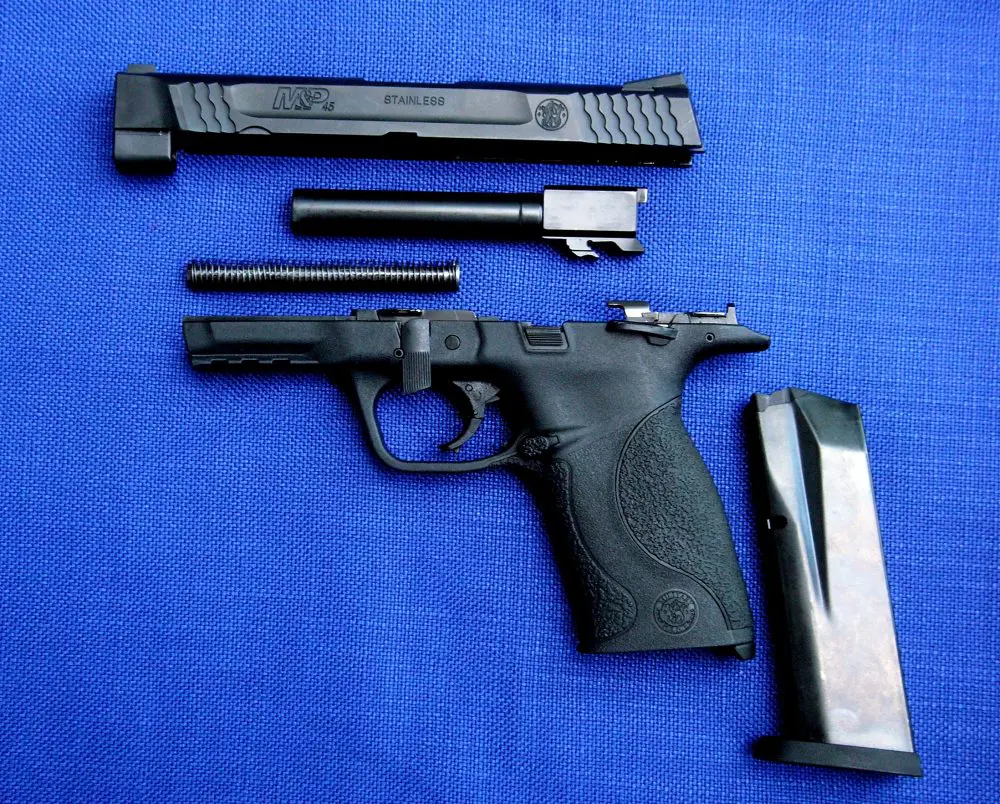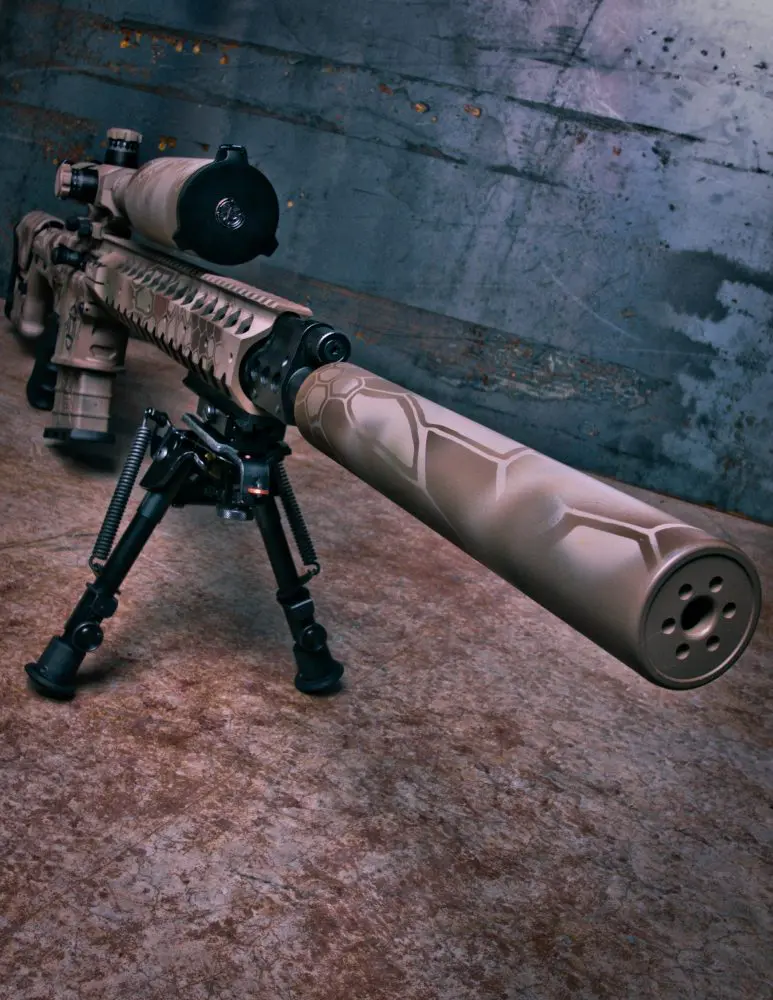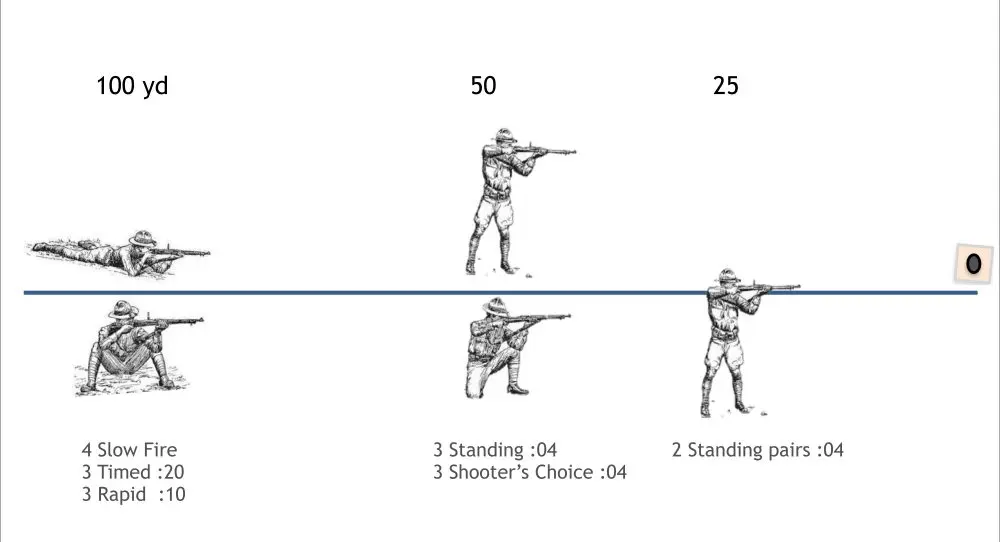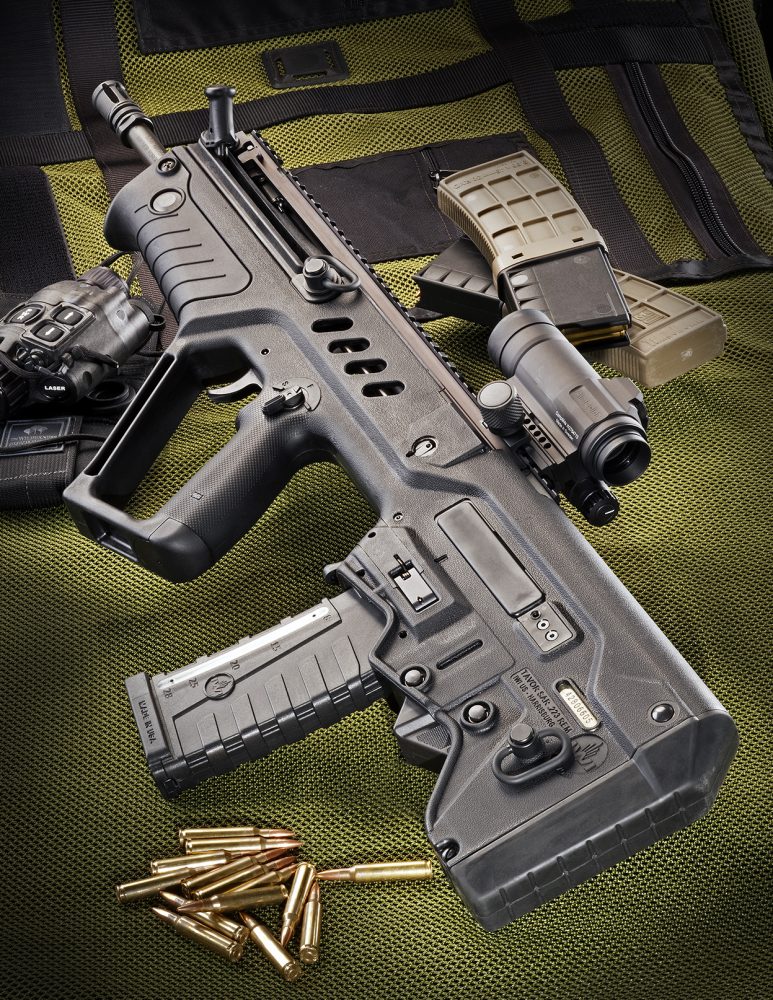
The TAR-21 (Tavor) israeli bullpup rifle was selected as the standard-issue weapon for the Israeli Defense Force in 2009. Named after Mount Tabor in Israel, TAR-21 stands for Tavor Assault Rifle—21st century.
In addition to Israel, 16 other countries have bought the rifle, mostly for issue to special units.
Going back as far as 2002, there has been much speculation that a semiautomatic-only version would be available to American buyers. That speculation is now a reality.
Israel Weapon Industries (IWI) has started a new U.S. subsidiary, IWI US, Inc. and is manufacturing the Tavor. Marketed under the moniker Tavor® SAR (Semiautomatic Rifle), delivery was scheduled for early 2013 and may be available by the time you read this.
Several versions will be available with either 16.5- or 18-inch barrel lengths, and in either Black or Flat Dark Earth. A left-hand model with 16.5-inch barrel and an “IDF” model with integral MEPRO-21 reflex sight round out the standard product line. Conversion kits available in 9mm Parabellum and 5.45x39mm are also planned.
Back in February, I was fortunate to get one of only a handful temporarily in from Israel and evaluate it for S.W.A.T.
Table of Contents
TAVOR SAR
As mentioned earlier, the Tavor SAR is a bullpup-type rifle. It is piston operated with a rotating bolt.
Overall length with the 16.5-inch barrel is 26.125 inches, or about 5.5 inches shorter than an M4-type rifle with 16-inch barrel with the stock collapsed. Weight empty and without optics is 7.9 pounds.
Tavor is also offered in Flat Dark Earth. Photo: IWI
The Tavor is chambered for 5.56mm NATO. The cold hammer forged barrel is chrome lined with a 1:7 twist that will stabilize the heavier .223/5.56 loads that are becoming more and more popular, while still stabilizing lighter bullets. The carbine used an A2-type flash hider.
On the top of the rifle is a full-length rail. IWI literature calls it a “Picatinny” rail, but it is not a true MIL-STD-1913 rail with a tunnel running its entire length, although the slot widths and spacing are correct. I tried several accessories made to match up with a Picatinny rail, and they all fit with no problem.
A similar type rail—approximately 5.75 inches in length—is located at about the two o’clock position on the right side of the rifle for white lights or lasers.
Tavor incorporates sockets for sling swivels. Bolt release is located under captive takedown pins.
Both the front and rear flip-up sights nest inside the tunnel of the rail when not raised for use. The rear aperture sight is not adjustable, and the front sight uses an M16-type sight that is adjustable for elevation. One side of the front sight’s square post has a tritium insert.
The Tavor uses standard AR-15/M16 magazines and comes shipped with one 30-round magazine. The magazine has a clear plastic “window” that shows when a magazine is fully loaded and down to eight rounds left. At the time of this writing, it is unknown if IWI US will offer the Tavor with a reduced-capacity magazine to those states that limit the rights of their citizens.
The leading edge of the lower handguard has a built-in stop—a good thing, since the weak hand is only five inches behind the muzzle.
Pushing in two small buttons located on the bottom of the pistol grip will allow the grip’s cap to be removed for a small storage area.
Although 16 inches long, barrel extends from handguards only a few inches, including A1-type flash hider.
The non-reciprocating cocking handle is on the left side.
The safety selector is well located on the left side of the rifle above the pistol grip. The magazine release lever is located on the front of the magazine well. The bolt release is located directly behind the magazine. More on this later…
Socket-type sling mounts are located on the left side of the rifle and perfectly situated to use a tactical two-point sling such as the Blue Force Gear Vickers sling that is my personal preference.
One of the most unique features of the Tavor SAR is how easily it is field stripped. The firing mechanism is removed by pushing out two captive takedown pins, lifting up the bolt release, and then lifting out the firing mechanism. Pushing out another captive takedown pin located on the top of the stock just ahead of the recoil pad allows the entire bolt carrier group, piston and recoil spring to be removed as an entire assembly. That’s it!
The test rifle also came with an accessory rail that attaches to the bottom of the handguard and a vertical foregrip (VFG). A removable rubber stopper on the bottom of the VFG allows storage for extra batteries or other small items. In my opinion the best thing about a VFG on this rifle is to help keep the hand away from the muzzle.
Location of safety allows easy manipulation.
FIELD EVALUATION
I picked up the IWI Tavor SAR from S.W.A.T. Staff Photographer Robbie Barrkman the day before I was to attend a writer’s event at the GPS Defense Sniper School sponsored by HPR Ammunition and Silencerco.
The class was using Rock River Arms carbines, and after receiving permission from Lead Instructor Jesse Johnson, I ran the Tavor on a jungle-lane drill as well as a move-to-contact drill. Right out of the box, it shot to point of aim with HPR’s 75-grain BTHP match loads, making hits on steel from 30 to around 150 yards with the issue iron sights possible.
Since Silencerco had suppressors available, I wanted to include in this article how the Tavor would run suppressed. Unfortunately, we did not have a wrench that provided enough leverage to remove the flash hider.
Although I only was able to put around 150 rounds downrange in the short time I had available at the event, initial impressions were favorable.
Magazine release is well located and ambidextrous.
I was impressed by both the facilities and professionalism of the GPS Defense Sniper School instructors, and hope to make it back to the Phoenix area for a complete report at a later date.
Back at my home range, I mounted an Aimpoint PRO (Patrol Rifle Optic) on the Tavor. While I prefer backup iron sights (BUIS) to be in the lower third of the optic so as not to clutter up the sight picture, those who like an exact co-witness will like the BUIS on the Tavor.
As has been said many times, “A sling to a rifle is as a holster to a pistol.” Because I planned on performing drills as well as static shooting—including transitions to the pistol—I attached a Blue Force Gear Vickers sling.
By pushing out captive takedown pin and rotating butt pad downward, the piston, recoil spring and bolt carrier group are simply pulled from the rear of the carbine.
Realizing the Tavor SAR will likely be used with magazines other than what ships with the gun, I assembled an assortment of different brands. These included Bravo Company USA aluminum mags, USGI mags refitted with Magpul anti-tilt followers, Magpul PMAGs, TangoDown ARC mags, and Lancer Systems L5 Translucent and L5 Advanced Warfighter magazines.
For ammunition, I gathered 17 different loads from ASYM, Black Hills, Double Tap, Federal/American Eagle, Hornady, HPR, and Summit as well as a quantity of handloads. The loads ran the gamut from 50 to 77 grains and from “practice” quality to match loads. I had also hoped to incorporate some imported surplus ammo of, shall we say, dubious quality, but none was available in my area.
Velocity was obtained for each load using a PACT Professional Model chronograph with the first screen 12 feet from the muzzle. Shooting from a bench from 50 yards while obtaining velocities, I was more concerned with correct bore line/sight line and blowing my sky screen than accuracy. Still, the Tavor showed very good accuracy, with the “group” ending up as a single ragged hole from the 190 rounds fired using iron sights.
The test rifle definitely preferred the heavier bullets, with the best accuracy obtained with the six 75- to 77-grain loads. And while the results were measurable, the differences were very negligible.
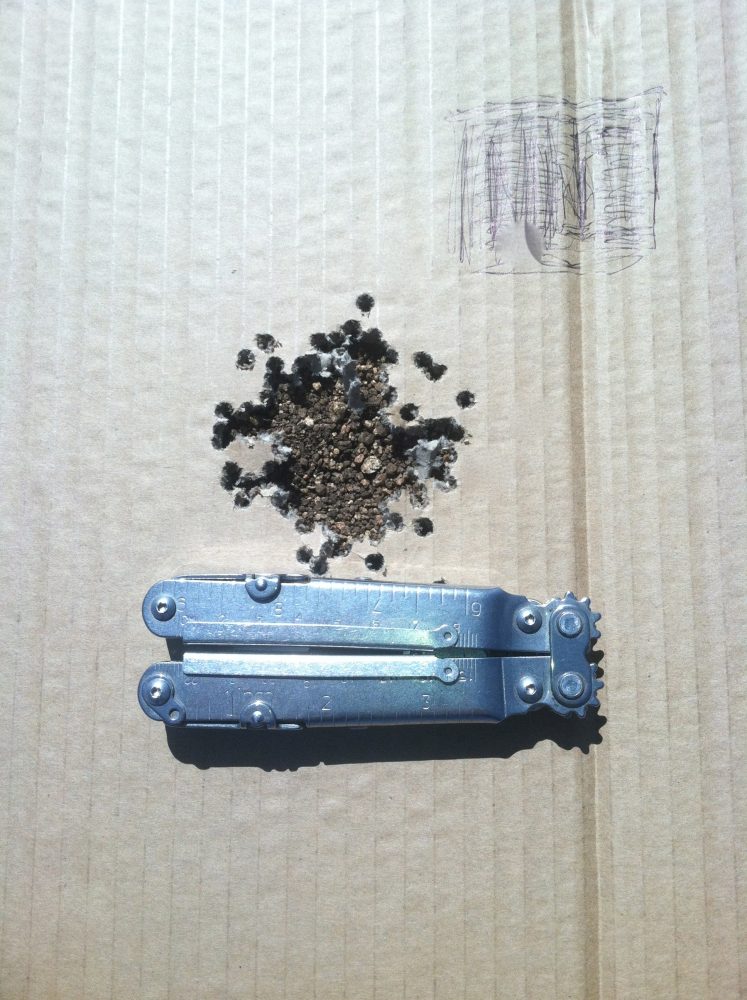
However, shooting four- to ten-round strings as quickly as I could fire them, all loads easily stayed within a six-inch circle. With the Tavor’s piston operation, great center of balance, and the VFG, felt recoil was all but nonexistent, making fast follow-up shots with the Aimpoint easy.
All brands of magazines fed reliably, dropped free and seated easily as long as they were downloaded to 28 rounds.
Earlier I mentioned the magazine and bolt release. For an emergency reload, I found that I could use the fresh magazine to swipe the magazine release on the way to the mag well. This was both fast and efficient.
The bolt release is located directly behind the magazine well. When the bolt stays rearward after the last round is fired and a fresh magazine is brought to the magazine well and seated, the thumb of the weak hand can be used to press the bolt release as soon as the magazine is seated, in one smooth motion.
Including the time spent with it at the GPS Defense Sniper School, I ended up firing over 900 rounds through the Tavor. It was never cleaned, though I did lube the bolt at about 500 rounds simply because that is my normal protocol. I did not experience a single malfunction—in fact, it never so much as stuttered.
In conclusion, I think the Tavor SAR has a lot going for it. It has some very unique features, and I would not hesitate to carry it in harm’s way.
SOURCES:
IWI US, Inc.
(717) 695-2081
www.iwi.us
Aimpoint Inc.
(703) 263-9795
www.aimpoint.com
ASYM Precision Ammunition
(970) 385-7900
www.asym-ammo.com
Black Hills Ammunition
(605) 348-5150
www.black-hills.com
Blue Force Gear, Inc.
(877) 430-2583
www.blueforcegear.com
Bravo Company USA
(877) 272-8626
www.bravocompanyusa.com
Double Tap Ammunition
(866) 357-10MM
www.doubletapammo.com
Federal Cartridge Company
(800) 322-2342
www.federalcartridge.com
GPS Defense Sniper School
(480) 452-1488
www.sniperschool.com
Hornady Mfg. Co.
(800) 338-3220
www.hornady.com
HPR Ammunition
(888) 966-8477
www.hprammo.com
Lancer Systems
(610) 973-2600
www.lancer-systems.com
Magpul Industries Corp.
(877) 462-4785
www.magpul.com
Silencerco, LLC
(801) 417-5384
www.silencerco.com
Summit Ammo
(877) 726-4345
www.summitammunition.com
TangoDown Inc.
(520) 888-3376
www.tangodown.com
